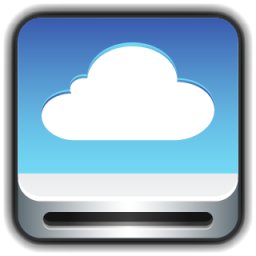 Cloud computing has been a growing trend in the business world, and the credit union industry is no exception. We've got credit union leader Rick Grady, vice president of research for the Texas Credit Union League, with us today to shed some light on cloud computing for credit unions.
Cloud computing has been a growing trend in the business world, and the credit union industry is no exception. We've got credit union leader Rick Grady, vice president of research for the Texas Credit Union League, with us today to shed some light on cloud computing for credit unions.
What is cloud computing?
Grady: The term comes from the drawing system analysts and designers would make on white boards and design sheets. To represent where a complex center would be (one that housed hardware, software, firmware, telecommunications and other infrastructure) the designers would draw a cloud. At EDS, we called them IPCs (Information Processing Centers). In the mid-1960s, when ARPANET was devised by the Department of Defense, the predecessor to the Internet, cloud computing was born. In the late 1990s and early 2000s, as people started accessing software and applications over telecommunications connected by modems into networks like telenet (AOL and others), developers started using the term cloud computing to represent a terminal (computer, phone, tablet) accessing all the components from a remote location.
How long has cloud computing been around?
Grady: Really, since the 1950’s when mainframes first were installed in governmental and educational facilities. People couldn’t afford the devices, so they accessed them with terminals and printers. When mini and microcomputers came on the scene, people started adopting the in-house model, where all of the hardware, software, and databases were located at the credit union facility. This was costly from a maintenance and protection aspect. The data still needed to be backed up and stored off site to be safe, in case a hurricane came through and removed the entire building for example. In sales we used to call the terminal access “on-line” computing, or batch computing.
And how does cloud computing fit with credit unions?
Grady: Technology has changed the financial world. Look at all of the applications one can access on an iPad that deal with financial management. If credit unions do not move quickly into this technology, they will write their place in the history books, just like buggy whip companies, coal-fired stoves, ice boxes, crank-starting automobiles, etc.
What value(s) does cloud computing offer credit unions?
Grady: Several. Cloud computing reduces the need for massive amounts of computers on site. Hardware costs are reduced, as the only need at the facility are terminals, printers and other input-output devices like card readers. Software costs are also reduced, as almost all applications are bought on a subscription basis rather than a license that is typically three to five years in length. The applications can be accessed from anywhere with any authorized device. Thus, one can use a notebook computer or iPad from a remote location, such as a car, airport terminal, home, remote office, and access all of the applications and data. A credit union could offer personal services on investment and retirement accounts by meeting with the member at their home or office, or operate from the break room at a factory and provide services directly in the field, or open a branch office with minimal lead time for telecommunications. Credit unions don’t have to be responsible for maintenance of machinery or backup of data.
What would be the drawback to cloud computing?
Grady: Security, security, security, and trust. A misplaced, lost or stolen device, like an iPad or notebook computer could be used to access cloud systems by unauthorized personnel. A service provider needs to be investigated closely, as their facilities or systems could be penetrated by hackers, especially through telecommunications, lost tapes or discs, or intruders. A service provider needs to be up and running 24 hours a day, 365 days a year. There is no room for downtime. Data flows through wires, cables, or the air. The need for strong encryption needs to be in place, as this data is vulnerable as it travels, can be intercepted and can be read. Professional hackers look for these cracks to pierce systems. And service providers have to live on the cutting edge of development or their customers, credit unions, will be left behind the times, tied to providers that are difficult to separate from. Cloud computing can be very “sticky.”
What is the biggest challenge for credit unions?
Grady: Themselves — specifically, accepting advancements in technology, such as mobile applications that give access to information by the members themselves. Fear and sharing control are the credit union’s biggest challenges.
What about the risks associated with cloud computing? And how does a credit union mitigate these risks?
Grady: Security is the greatest risk. Expose the members to having accounts entered and drained will put the credit union out of business. To mitigate risks, credit unions should investigate, test, audit, and hire professional third-party auditors; get written audits and assurances from vendors, work with insurance companies to ensure they have proper coverage for liabilities, and talk with current customers.
%20formatted-1.png?width=2528&height=739&name=SIGNiX%20Logo%20Main%20(white)%20formatted-1.png)

